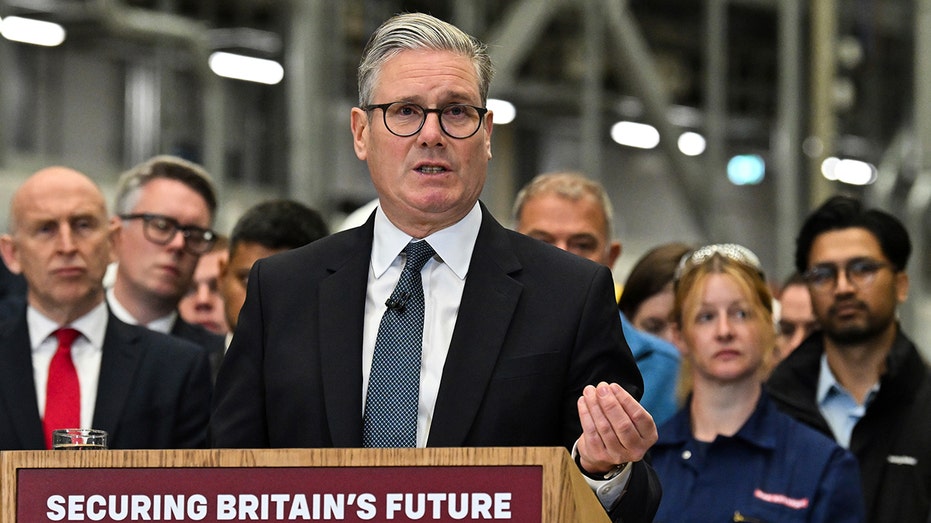UK Prime Minister Keir Starmer Orders Military to Reach War-Fighting Readiness Amid National Security Concerns
UK Prime Minister Keir Starmer announces new military upgrades to enhance war readiness and bolster NATO support.

British Prime Minister Keir Starmer declared a significant shift in the United Kingdom’s military posture on Monday, instructing the nation’s armed forces to adopt “war-fighting readiness” as their central purpose in response to escalating threats from Russia. Speaking from BAE Systems’ Govan shipyard in Glasgow, Starmer laid out a bold new approach intended to recalibrate U.K. defense strategy for an era of heightened global tension and uncertainty.
Starmer outlined what he called “three fundamental changes” in the wake of a newly-commissioned strategic defense review. “First, we are moving to war-fighting readiness as the central purpose of our armed forces,” the prime minister stated. He underscored the importance of deterrence in confronting adversaries equipped with advanced military capabilities, emphasizing, “The most effective way to deter them is to be ready. And frankly, to show them that we’re ready, to deliver peace through strength.”
Highlighting the quality and commitment of Britain’s service personnel, Starmer announced the largest pay rise for armed forces members in two decades and pledged to reverse decades of defense cuts. “We’ll build a fighting force that is more integrated, more ready, and more lethal than ever, backed by a stronger strategic reserve, fully trained and ready to mobilize at any time,” he said, adding that the government would end the “hollowing out” of the nation’s military capabilities.
The prime minister’s remarks come amid ongoing geopolitical instability, including the war in Ukraine, renewed nuclear risks, and an increase in cyberattacks targeting Western democracies. Starmer identified “growing Russian aggression” in U.K. waters and airspace as a source of both national security concern and economic strain, blaming such provocations for contributing to a higher cost of living. “The threat we now face is more serious, more immediate, and more unpredictable than at any time since the Cold War,” he warned.
This new defense posture flows from a comprehensive review led by former U.K. defense secretary and NATO secretary general George Robertson. The government has committed to implementing all 62 recommendations from the review, aiming for modernization across land, sea, air, and cyberspace domains. Notably, the last major review in 2021 downplayed the prospect of large-scale tank battles in Europe—a prediction starkly contradicted by Russia’s invasion of Ukraine only months later.
Starmer’s second key change focuses on strengthening the United Kingdom’s contributions to NATO. “Our defense policy will always be NATO first, something that’s written through this review,” the prime minister said, vowing to ensure that all future military developments align with the alliance’s priorities. He promised that the transformation underway would amount to Britain’s biggest commitment to NATO since its foundation, reinforcing both continental security and transatlantic bonds with the United States.
The third pillar of the government’s new approach is a drive for rapid innovation and integration of emerging technologies at what Starmer called a “wartime pace.” He emphasized that this does not mean replacing skilled personnel or existing equipment, but rather learning the lessons of Ukraine and ensuring that “drones, destroyers, AI, aircraft, each different branch of our armed services” work seamlessly together to create a vastly more capable force. “We are determined to create an army which is ten times more lethal by 2035,” he asserted.
Among tangible steps, the U.K. plans to expand its fleet of nuclear-powered submarines, developing up to 12 new SSN-AUKUS boats as part of a trilateral partnership with Australia and the United States. The government has also pledged £15 billion in additional investment in Britain’s nuclear arsenal, although operational details remain classified. Conventional weapons stockpiles will be increased with up to 7,000 domestically-built long-range weapons, further enhancing the country’s defensive and deterrent capabilities.
Financially, Starmer reiterated his promise to raise defense spending to 2.5% of GDP by 2027, up from the current 2.3%, with an eventual goal of reaching 3%. Despite questions about the timeline, the prime minister stressed the U.K.’s unwavering support for Ukraine and the imperative to deter further aggression. He also positioned rearmament as a boost for the domestic economy, calling it a “defense dividend” that would generate thousands of high-quality manufacturing jobs—an intentional reversal of the post-Cold War “peace dividend” that saw funds redirected away from defense.
As the government embarks on this sweeping overhaul of national security policy, Starmer’s message was clear: the United Kingdom must prepare for an era of unpredictable challenges with strength, vigilance, and innovation at its core.




